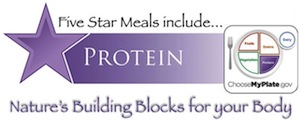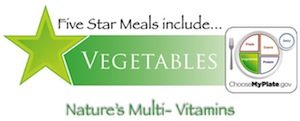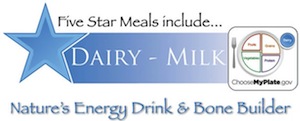 Protein
Protein
Protein, or meat and alternatives to meat, is a vital source of energy and indispensable nutrient served as one of our main meal components. Protein is important for our immune function, and proteins transport vitamins and minerals throughout our body.
We offer age appropriate servings to include at least one ounce daily and 8 to 10 ounces weekly for grades K through 5, and 9 to 10 ounces weekly for grades 6 - 8. Teens require more of protein for building and repairing muscles, they will be offered daily amounts of at least 2 ounces and as much as 10 to 12 ounces weekly.
Fruits and Vegetables
We offer fruits and vegetables daily and students are required to take at least one with every school meal. Any fruits that are frozen or canned fruits are packed in natural juice, water or light syrup whenever possible.
We will be offering ¾ - 1 cup of vegetables plus ½ - 1 cup of fruit every day. Students must select at least ½ cup of fruit or vegetables or a combination of the two.
Vegetables
Additionally, each week we serve a variety of nutrient packed vegetables which include dark green, red and orange, and starchy vegetables. This also includes beans and peas and other choices of legumes.
It is important to eat a variety of fruits and vegetables representing all the colors of the rainbow. Natural foods with bright, rich colors are not just nice to look at they provide powerful benefits to keep you healthy. These foods are packed with powerful compounds called flavonoids and carotenoids that can fight the damaging disease causing free radicals in your body and help to lower inflammation.
Grains
One of our big focuses toward offering nutritious meals is making sure that at least half of the grains served will be whole grains, with an emphasis our the next couple of years of moving toward a 100% whole grain offering.
Eating grains, especially whole grains, provides health benefits that include reducing blood cholesterol levels and lowering the risk of heart disease, obesity, and type 2 diabetes.
We offer age appropriate servings of grain components in our meals to include at least one ounce daily and 8 to 9 ounces weekly for grades K through 5, and 8 to 10 ounces weekly for grades 6 - 8. Teens in grades 9 - 12 will be offered daily amounts of at least 2 ounces and as much as 10 to 12 ounces weekly.
Milk
Milk and dairy products are especially important to bone health during school aged years. It provides important sources of calcium, potassium and vitamin D, and help to reduce the risk of cardiovascular disease, type 2 diabetes, and help to lower blood pressure in adults.
We will offer at least two choices of milk with our school meals. Unflavored milk may be non-fat or low-fat (no more than 1%), flavored milk must be skim or non-fat, and lactose-reduced or lactose-free can be non-fat or low-fat (no more than 1%).